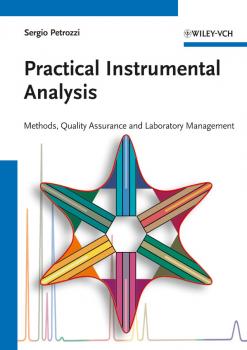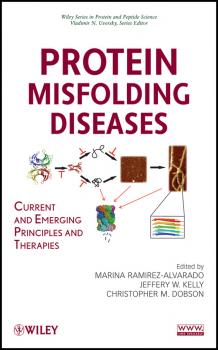Прочая образовательная литература
Различные книги в жанре Прочая образовательная литератураComprehensive Chiroptical Spectroscopy. Instrumentation, Methodologies, and Theoretical Simulations
This book provides an introduction to the important methods of chiroptical spectroscopy in general, and circular dichroism (CD) in particular, which are increasingly important in all areas of chemistry, biochemistry, and structural biology. The book can be used as a text for undergraduate and graduate students and as a reference for researchers in academia and industry, with or without the companion volume in this set. Experimental methods and instrumentation are described with topics ranging from the most widely used methods (electronic and vibrational CD) to frontier areas such as nonlinear spectroscopy and photoelectron CD, as well as the theory of chiroptical methods and techniques for simulating chiroptical properties. Each chapter is written by one or more leading authorities with extensive experience in the field.
Plastisch, Elastisch, und Fantastisch. Ohne Kunststoffe Geht es Nicht
From natural rubber to fully synthetic polymers like nylon and teflon and up to biodegradable yoghurt cups: Georg Schwedt shows the whole spectrum of plastics, their development and applications as well as their influence on our daily life.
Aryl Diazonium Salts. New Coupling Agents and Surface Science
Diazonium compounds are employed as a new class of coupling agents to link polymers, biomacromolecules, and other species (e. g. metallic nanoparticles) to the surface of materials. The resulting high performance materials show improved chemical and physical properties and find widespread applications. The advantage of aryl diazonium salts compared to other surface modifiers lies in their ease of preparation, rapid (electro)reduction, large choice of reactive functional groups, and strong aryl-surface covalent bonding. This unique book summarizes the current knowledge of the surface and interface chemistry of aryl diazonium salts. It covers fundamental aspects of diazonium chemistry together with theoretical calculations of surface-molecule bonding, analytical methods used for the characterization of aryl layers, as well as important applications in the field of electrochemistry, nanotechnology, biosensors, polymer coatings and materials science. Furthermore, information on other surface modifiers (amines, silanes, hydrazines, iodonium salts) is included. This collection of 14 self-contained chapters constitutes a valuable book for PhD students, academics and industrial researchers working on this hot topic.
Practical Instrumental Analysis. Methods, Quality Assurance and Laboratory Management
This practical book in instrumental analytics conveys an overview of important methods of analysis and enables the reader to realistically learn the (principally technology-independent) working techniques the analytical chemist uses to develop methods and conduct validation. What is to be conveyed to the student is the fact that analysts in their capacity as problem-solvers perform services for certain groups of customers, i.e., the solution to the problem should in any case be processed in such a way as to be «fit for purpose». The book presents sixteen experiments in analytical chemistry laboratory courses. They consist of the classical curriculum used at universities and universities of applied sciences with chromatographic procedures, atom spectrometric methods, sensors and special methods (e.g. field flow fractionation , flow injection analysis and N-determination according to Kjeldahl). The carefully chosen combination of theoretical description of the methods of analysis and the detailed instructions given are what characterizes this book. The instructions to the experiments are so detailed that the measurements can, for the most part, be taken without the help of additional literature. The book is complemented with tips for effective literature and database research on the topics of organisation and the practical workflow of experiments in analytical laboratory, on the topic of the use of laboratory logs as well as on writing technical reports and grading them (Evaluation Guidelines for Laboratory Experiments). A small introduction to Quality Management, a brief glance at the history of analytical chemistry as well as a detailed appendix on the topic of safety in analytical laboratories and a short introduction to the new system of grading and marking chemicals using the «Globally Harmonized System of Classification and Labelling of Chemicals (GHS)», round off this book. This book is therefore an indispensable workbook for students, internship assistants and lecturers (in the area of chemistry, biotechnology, food technology and environmental technology) in the basic training programme of analytics at universities and universities of applied sciences.
Chemische Grenzwerte. Eine Standortbestimmung von Chemikern, Juristen, Soziologen und Philosophen
Nach welchen Kriterien legt man Grenzwerte fur Chemikalien – ob am Arbeitsplatz, im Haushalt oder in der Umwelt – fest? Ein Frage, deren Aktualitat nicht nur fur Wissenschaftler, sondern auch fur die Bevolkerung immens zunimmt und die sich nicht einseitig aus der Sicht der Naturwissenschaft beantworten la?t. Stichworte wie subjektive Risikowahrnehmung, intuitive Toxikologie oder erkenntnistheoretische Aspekte des «wahren Me?wertes» zeigen, da? hier auch Juristen, Soziologen, Philosophen und Umweltmediziner gefordert sind. Dem Rechnung tragend, kommen in dieser Sammlung von Beitragen zu einer einschlagigen Tagung des Stifterverbandes fur die Deutsche Wissenschaft Fachleute verschiedenster Disziplinen zu Wort. Sie diskutieren philosophisch-ethische Spannungen ebenso wie technische, analytische und toxikologische Fortschritte bei der Festlegung von Grenzwerten. Das hochinteressante Buch, mehr als eine Aneinanderreihung fachspezifischer Vortrage, vermittelt ein facettenreiches Bild eines komplizierten Sachverhalts.
Wildland Recreation. Ecology and Management
The authoritative guide to understanding and managing the ecological impacts of recreational activities in wildlands This third edition provides an updated and thorough examination of the ecological impacts of recreational use on wildlands and the best management practices to employ in places where recreation and preservation of natural conditions are both important – and often conflicting – objectives. Covering the latest research, this edition provides detailed information about the environmental changes that result from recreational use. It describes spatial patterns of impact and trends over time, then explores the factors that determine magnitude of impact, including amount of use, type and behavior of use, and environmental durability. Numerous examples, drawn from parks and recreation areas around the world, give readers insight into why certain areas are more heavily damaged than others, and demonstrate the techniques available to mitigate damage. The book incorporates both the first-hand experience of the authors and an exhaustive review of the world’s literature on the subject. Boxes provide quick access to important material, and further resources are referenced in an extensive bibliography. Essential reading for all park and protected area management professionals, this book is also a useful textbook for upper division undergraduate and graduate students on recreation ecology and recreation management courses.
The Stratosphere. Dynamics, Transport, and Chemistry
Published by the American Geophysical Union as part of the Geophysical Monograph Series, Volume 190. The Stratosphere: Dynamics, Transport, and Chemistry is the first volume in 20 years that offers a comprehensive review of the Earth's stratosphere, increasingly recognized as an important component of the climate system. The volume addresses key advances in our understanding of the stratospheric circulation and transport and summarizes the last two decades of research to provide a concise yet comprehensive overview of the state of the field. This monograph reviews many important aspects of the dynamics, transport, and chemistry of the stratosphere by some of the world's leading experts, including up-to-date discussions of Dynamics of stratospheric polar vortices Chemistry and dynamics of the ozone hole Role of solar variability in the stratosphere Effect of gravity waves in the stratosphere Importance of atmospheric annular modes This volume will be of interest to graduate students and scientists who wish to learn more about the stratosphere. It will also be useful to atmospheric science departments as a textbook for classes on the stratosphere.
The Learner-Centered Curriculum. Design and Implementation
Praise for The Learner-Centered Curriculum «Cullen, Harris, and Hill provide a clear and practical framework for addressing the root of the problems of today's universities. The authors provide a lucid, actionable, and evidence-based prescription for building an integrated learning system to replace the hodgepodge of miscellany that we have inherited. They illustrate the kind of conversations and transformations that could raise the value of and change the prospects for higher education.»—John Tagg, author, The Learning Paradigm College «This book offers a powerful, realistic, and much-needed plan for changing how learning happens in higher education. Anyone concerned about improving teaching and students' learning needs to read this book!»—Terry Doyle, author, Helping Students Learn in a Learner-Centered Environment «To help achieve the imperative to make our universities more learner-centered, the authors focus on curriculum redesign and offer a solid theoretical approach combined with applied skills that institutional leaders and faculty can use to attain their goals. Shared governance, autonomous learning, assessment, technology, and physical space are among the elements discussed in this excellent book that universities will need to consider when developing a new curriculum that is more learner-centered.»—Jolene Koester, president, California State University, Northridge «Cullen, Harris, and Hill provide a thought-provoking resource with the compelling advantages and frameworks to create twenty-first-century student-centered, knowledge-centered, assessment-centered, and community-centered curriculum. This is a must-read for faculty and administrators committed to transforming their curriculum in order to educate better prepared graduates.»—Deborah L. Ford, chancellor, University of Wisconsin-Parkside «This is the book that I have been looking for. Written by three leaders who have done the heavy lifting of leading real change, it's a book for every academic leader who understands that innovation is essential to the future of higher education.»—Earl H. Potter, III, president, St. Cloud State University
Trade-offs in Conservation. Deciding What to Save
This book demonstrates that trade-offs can be very important for conservationists. Its various chapters show how and why trade-offs are made, and why conservationists need to think very hard about what, if anything, to do about them. The book argues that conservationists must carefully weigh up, and be explicit about, the trade-offs that they make every day in deciding what to save. Key Features: Discusses the wider non-biological issues that surround making decisions about which species and biogeographic areas to prioritise for conservation Focuses on questions such as: What are these wider issues that are influencing the decisions we make? What factors need to be included in our assessment of trade-offs? What package of information and issues do managers need to consider in making a rational decision? Who should make such decisions? Part of the Conservation Science and Practice book series This volume is of interest to policy-makers, researchers, practitioners and postgraduate students who are concerned about making decisions that include recognition of trade-offs in conservation planning.
Protein Misfolding Diseases. Current and Emerging Principles and Therapies
An increasingly aging population will add to the number of individuals suffering from amyloid. Protein Misfolding Diseases provides a systematic overview of the current and emerging therapies for these types of protein misfolding diseases, including Alzheimer's, Parkinson's, and Mad Cow. The book emphasizes therapeutics in an amyloid disease context to help students, faculty, scientific researchers, and doctors working with protein misfolding diseases bridge the gap between basic science and pharmaceutical applications to protein misfolding disease.









